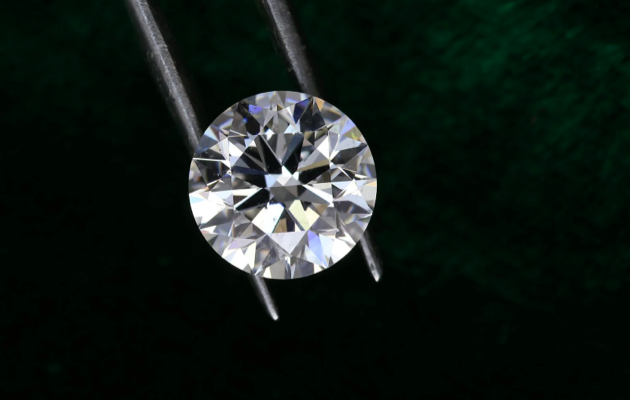Design Your Own Bespoke Engagement Ring
Diamond Cut
One of the most defining characteristics of a diamond is its cut. Diamond cut is the summary of a diamond's proportions evaluated using the attributes of brilliance, fire, and scintillation. While high grades of colour, clarity, and carat weight affect a diamond, it's the cut that determines the symmetry of the stone's facets, its overall proportions, and its ability to reflect light. An expertly-cut diamond will achieve high levels of brilliance, sparkle, and durability. Even if a diamond is graded well in other areas, a poor cut can result in a dull, muted effect.
Diamond Cut Grading Chart
Excellent
Diamonds that are graded "Excellent" offer maximum fire (amount of light that is reflected by the diamond as result of the optimum dispersion of light as it enters the diamond) and brilliance (brightness of the diamond). It is neither cut too deep nor too shallow. It also has excellent symmetry (refers to how each facet of a diamond is angled to allow for maximum brilliance) and has excellent polish (refers to how smooth each facet is). A diamond that has an excellent cut grade is able to reflect most of the light that enters the diamond.
Very Good
Diamonds that are graded “Very Good” are cheaper than excellent cuts but are almost very similar in terms of fire and brilliance when viewed with normal lighting. While there are differences in cut quality compared to excellent cut diamonds, it is unnoticeable to the untrained eye.
Good
Diamonds that are graded “Good” in terms of cut quality offer the best value for money. They are not nearly as expensive as diamonds with very good or excellent cut grades but they offer superior fire and brilliance. Such diamonds are able to reflect most of the light that enters the diamond.
Fair
Diamonds rated "Fair" allow most of the light entering the diamond to escape from the sides or bottom, reducing perceived fire and brilliance. More acceptable in diamonds of less than 0.75 carats, where differences in sparkle are more difficult to perceive.
Parts of a Diamond
A diamond is comprised of five main parts that affect its shape and radiance. Knowing these terms will help you understand the important components to consider when selecting a diamond.
Table & Table Percentage
The largest facet of the diamond, a table is the flat surface on the top of the stone, resembling a 'table'.
A diamond's table is the largest facet of the stone, comprising the flat surface on the top. The table percentage is the ratio of the width of the diamond's top facet in relation to the width of the entire stone. The right ratio results in a large amount of fire and brilliance.
Crown
This is the top portion of the diamond, located above the girdle and extending below the table.
A diamond's crown extends from the top of the stone (the 'table') down to the girdle (the widest point of the diamond). Crowns can be comprised of step cut facets or brilliant cut facets.
Girdle
Forming the outer edge of the diamond, this is where the crown and the pavilion meet and is the widest part of a diamond.
This is the portion of the diamond between the crown and the pavilion, essentially spanning the width of the stone from side to side. The measurement of the girdle represents the perimeter of the diamond. A diamond's girdle can be rough, polished, or faceted, and does not typically affect the quality or appearance of the stone.
Pavilion
Located at the bottom of the diamond, the pavilion bridges the girdle and the culet and form at the bottom (culet).
Located between the girdle and the culet (point), the pavilion is integral to the stone's light reflecting properties. A properly cut pavilion will allow the maximum amount of light to reflect from the surface of the stone. An excessively deep or shallow diamond can cause light to escape out of the bottom and sides, reducing its sparkle
Culet
The smallest facet of a diamond, the culet is located at the very bottom of the stone.
The smallest facet of a diamond, the culet is located at the very bottom of the stone. If the diamond ends in a point, the diamond grading report will show a value of 'None' for the culet designation. This small facet was originally intended to protect the diamond's pavilion, although today's settings are usually strong enough to render it unnecessary.
Need More Help?
If you'd like to talk to an expert gemologist about our diamonds, or a member of our friendly Customer Care Team, please get in touch on +44 207 4040 492 or enter into a Live chat as you Prefer.







